LLMSeqRec: LLM Enhanced Contextual Sequential Recommender
Midway Through OSRE
My Journey with LLMSeqRec
Hello from the Midpoint!
Hi everyone! I’m Connor Lee, a student at NYU studying Computer Science and Mathematics, and I’m excited to share the progress I’ve made halfway through the Open Source Research Experience (OSRE) with my project: LLMSeqRec – a large language model-enhanced sequential recommender system.
Over the past several weeks, I’ve had the opportunity to explore the intersection of recommender systems and large language models (LLMs), and it’s been a deep, challenging, and rewarding dive into building smarter, more contextual recommendation engines.
What is LLMSeqRec?
LLMSeqRec stands for LLM-Enhanced Contextual Sequential Recommender. Traditional sequential recommendation systems like SASRec are great at capturing patterns from user-item interactions, but they often fall short in two areas: understanding semantic context (e.g., item descriptions, reviews) and dealing with cold-start problems.
LLMSeqRec aims to address this by incorporating pretrained LLM embeddings into the recommendation pipeline. The goal is to enhance models like SASRec with semantic signals from text (like product reviews or titles), allowing them to better model user intent, long-range dependencies, and generalize to new items or users.
Progress So Far
✅ Baseline SASRec Runs
To establish a benchmark, I successfully ran the original SASRec implementation (in PyTorch) using both the MovieLens 1M and Amazon Beauty datasets. After debugging initial data formatting issues and adjusting batch sizes for local CPU/GPU compatibility, I automated training with scripts that let me scale to 200+ epochs to acheive the best performance in both Colab and on my MacBook via CPU.
Note: At this stage, we have not yet integrated LLMs into the model. These baseline runs (SASRec) serve as the control group for evaluating the future impact of LLM-based enhancements.
What’s Next
As I enter the second half of the OSRE, I’ll be shifting gears toward LLM integration, model evaluation, and running LLM-powered sequential recommendations using product metadata and contextual information. Here’s what’s ahead:
- Designing pipelines to extract and align textual metadata with item sequences
- Integrating LLM-generated embeddings into the recommender model
- Evaluating performance changes across different dataset characteristics
📊 Experimental Results
We have not yet utilized LLMs in our current experiments. The results below reflect our reproduced baseline performance of SASRec across datasets.
Below are the performance curves on different test sets, where we evaluate model performance every 20 epochs during training:
Beauty Dataset Performance
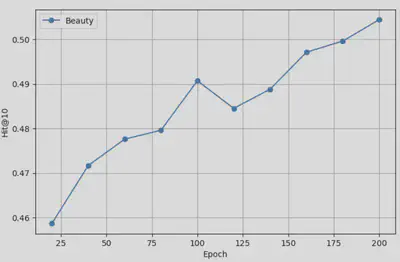
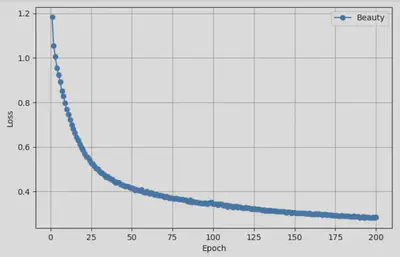
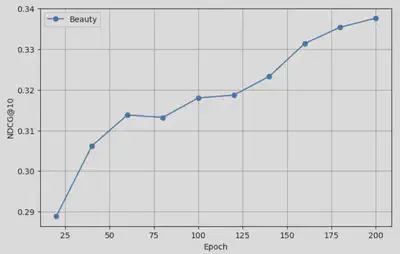
ML-1M Dataset Performance
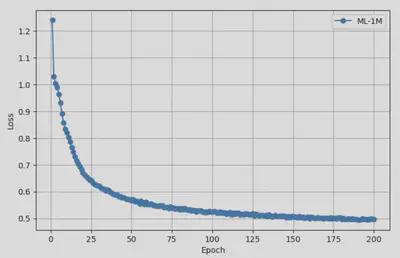
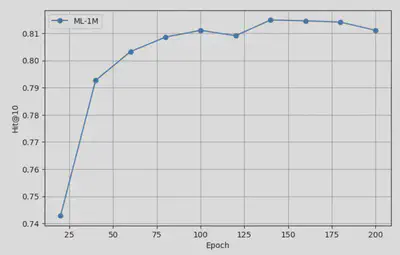
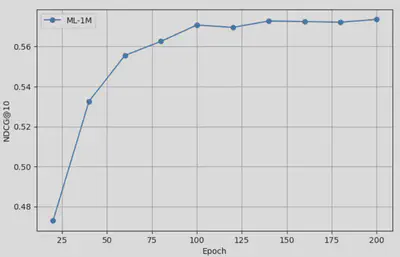
These results demonstrate that our baseline SASRec reproductions are converging as expected and will serve as a solid foundation for comparison once LLM integration is complete.
Closing Thoughts
This project has been an exciting journey into both research and engineering and I’m excited to explore LLM-powered embedding integration in the upcoming phase.
I’m incredibly grateful to my mentors Dr. Linsey Pang and Dr. Bin Dong for their support and guidance throughout the project so far. I’m looking forward to sharing more technical results as we work toward building smarter, more adaptable recommender systems.